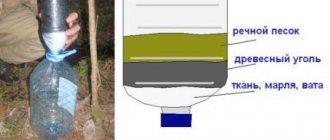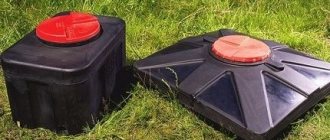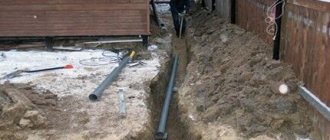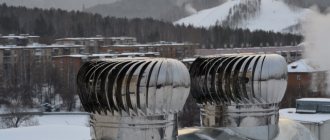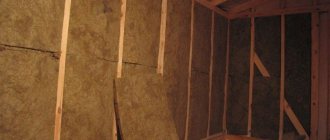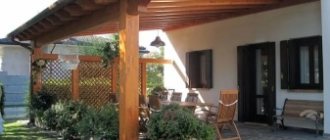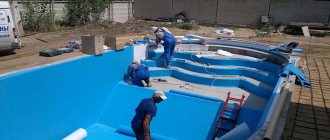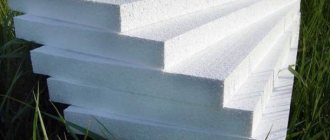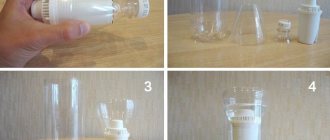Does your pool, in addition to the joy of bathing and swimming, cause you trouble in the form of quickly polluted water? Did the cost of filters for cleaning it, which are offered in specialized stores, shock you? Agree, it would be nice to get a filter device for a reasonable price.
You don't have to buy expensive devices for this. You can make an effective sand filter for your pool with your own hands, which will adequately purify the water from foreign matter. We will help you cope with this task - the article provides step-by-step instructions on how to make such a filter on your own.
We provided the construction process with visual photographs and videos on how to independently create simple and effective filter devices.
What is it, what is it for?
This device refers to mechanical filters for rough water purification in swimming pools, SPA reservoirs and similar reservoirs.
Sand filters are installed as stationary ones and pass the entire volume of water from 1 to 3 times a day, retaining insoluble foreign suspensions with sizes greater than 20-25 microns.
The exact value of the last parameter depends on the type of filler . In most cases, its functions are performed by calcined or free of organic impurities quartz sand.
If there are increased requirements for the fineness of cleaning, silicone or glass granules of a finer fraction or layers of filler with different sizes, base and properties can be poured inside.
Operating principle
The sand filter is set up quite simply!
It consists of the following main parts:
- A moisture-proof storage container of sufficient volume.
- A receiving chamber connected to the inlet pipe.
- Contaminant retention of sand filler.
- A drainage device connected to the outlet pipe.
The material from which the container with the sand inside is made must be resistant to aggressive influences. A plastic barrel works well. A water intake device is attached to its bottom. It is a drainage chamber with walls made of fine mesh. The sizes of the honeycombs are selected smaller than the fractions of sand used. The filter device is shown in the figure:
Expert opinion
Kulikov Vladimir Sergeevich
Sand, consisting of very fine fractions, will clog the mesh walls of the drainage chamber, and the system will stop functioning. When using sand that is too coarse, the quality of water purification deteriorates. The optimal size of sand fractions lies in the range from 0.4 to 0.8 mm.
Water purification is achieved due to mechanical screening of polluting particles when a liquid flow passes through a layer of sand. It does not fill the tank completely; a receiving chamber is formed on top, filled with water from the pool.
Liquid circulation is carried out using a pump connected to the inlet or outlet pipe. The choice of connection diagram depends on the characteristics of the tank drain configuration and the type of pool. Having understood the principle of operation, you can begin to independently construct a sand filter.
Have you ever assembled a pool filter?
It happened, it didn't happen
The design and principle of operation of a filter for a pool of this type
The standard package includes:
- A sealed housing in the shape of a tank or barrel with two openings for water supply and drainage and built-in diffusers for uniform distribution of water.
- Skimmer for sucking water from the surface of the pool with nets for collecting particularly large debris.
- A pump that provides a sufficient speed of water circulation and directs it into the filtration tank.
- Multi-position control valve for switching modes.
- Pressure gauge for monitoring the water pressure in the filter container and monitoring the degree of contamination of the filler.
- Connecting hoses and auxiliary elements (pallets, stands, fasteners).
Cleaning is carried out according to the following scheme: after turning on the pump, the contaminated water taken through the skimmer is directed into the container with sand, passes from top to bottom, leaving debris there, and returns back.
As impurities settle in the sand, more and more pressure is required for the passage of water inside; at a critical value, the arrow on the pressure gauge indicator goes into the red zone. This serves as a signal to switch the device to backwash mode; after it has passed, the position of the valve changes and the filter returns to operation.
This principle of operation is implemented in all sand filters, the only difference between the models is:
- In the body material. The walls of filtration tanks can be made from inexpensive plastic or polypropylene, or from heavy-duty polyamide, thermoplastic or fiberglass.
- Throughput (performance), in turn determined by the filter diameter, filler volume and pump power.
- Different ways to connect the valve. Filters with side connections take up less space, while filters with top connections are considered more reliable and easier to maintain.
- Number of control valve positions. When planning maximum process automation, it is worth buying a model with a six-position valve. For simpler models, the valve manually switches between 4 modes.
The operating principle of a sand filter is discussed in this article.
Why clean the pool water?
During the warm season, water in any body of water slowly becomes polluted with organic substances if it does not circulate and is not filtered. A natural reservoir is a complex natural circulation system where groundwater flows into the ground, and its supply is constantly replenished by precipitation. In nature, filtration is carried out naturally, but in a country pool this has to be done using special devices.
Organic sediment rapidly decomposes, causing decay, and in this environment microscopic greenish bacteria grow - light blue-green aquatic plants and greenish euglena. This process is known as “water blooming,” which becomes cloudy and greenish in the light. This process is well known to aquarists, and approximately the same thing happens in a pool if there is no filtration.
In addition, plant debris falls onto the surface of the water - dry branches, ovaries, flowers and leaves. Bird feces, sand and small particles of soil blown by the wind fall to the bottom of the pool. Uninvited guests - mosquito and dragonfly larvae, falling insects (beetles, wasps, grasshoppers) are often alive and well in an unnatural body of water. Unable to get out of the water, they drown and disintegrate. This whole garbage not only spoils the water, but also destroys the aesthetics of the pool.
Tip: A filter with a pool pump will help improve the situation. The filtered water is not drained, it is cleaned and returned to the reservoir. Large plant debris is removed from the tank with a net or a special garbage container for overflowing water. Special chemical additives help prevent smoldering and blooming of water. Dirt from the bottom is removed with a water vacuum cleaner or a homemade siphon from a hose.
Advantages and disadvantages
The advantages of filters in this group include:
- affordable cost of equipment, components and sand aggregate;
- fast and high-quality purification of water from any insoluble particles with sizes over 25 microns (from 5 microns when pouring glass sand into the filter);
- environmental cleanliness and chemical inertness of the filter material;
- ease of installation and maintenance;
- a wide selection of models, the ability to fully automate processes.
The disadvantages of sand filters are:
- high water consumption during mandatory washing of the aggregate and the duration of this process;
- inability to retain soluble organics and excessively fine particles;
- dependence of the performance and quality of water filtration on the weight and dimensions of the device.
Operating Requirements
During tank operation, the filter unit gradually becomes clogged. To maintain efficiency and productivity at a high level, cleaning work must be carried out regularly.
Particular attention should be paid to the equipment of sand filters. During operation, scale is released, which reduces throughput
This can lead to congestion.
Note: Flushing occurs every ten days. If the tank is used intensively, the frequency of filter cleaning can be easily changed.
Special means are used to remove such deposits. Cleaning is carried out several times a year. Backwashing is in progress.
In this case, a lime dissolving agent is added. When the product enters the device, the flushing is switched off. This ensures that the product completely dissolves the lime.
This takes on average several hours. This is followed by a thorough cleaning. The filter is used to purify water. Therefore you should not save.
When choosing a device, it is necessary to take into account all its advantages and disadvantages, as well as the amount of purified water. This will allow you to choose the right option for your pool.
The following video will show you how to create a billiard filter with your own hands:
Page 3
If you are planning to equip a swimming pool on your property, a person should first of all take care of what funds will be used for maintenance. In this situation, the use of pumping equipment is the best option.
It is important to understand that a pool pump is a professional type of artificial plumbing equipment that performs a number of important functions. In this article we will explain in detail what they are for and what type of equipment they are used for.
Comparison with cartridge and diatom
The strengths and weaknesses of sand filters are better demonstrated when compared with those of cartridge and diatomaceous earth filters. Despite the general principle of operation (mechanical cleaning), these devices have different price-effectiveness ratios. Comparison table:
| Sand | Cartridge | Diatomaceous | |
| Cleaning fineness | Up to 20-25 microns with standard filler, 5-10 with alternative | Up to 10-15 microns | 1-5 microns |
| Average productivity, m3/h | 3-100 | 3-45 | |
| Filtration quality | Good when replacing quartz filler with glass | good | Best performance in the group |
| Filter change frequency | Once every 1-3 years for quartz sand, up to 6 years for glass filler | 2-4 cartridges per season | Complete replacement of the mixture once a season, disposal of waste |
| Price category | Economy and average | Premium | |
| Service life declared by manufacturers, years | 5 | To 10 | |
| Optimal application | They are recognized as almost universal, but due to their large weight and dimensions they are better suited for stationary pools with a volume of 10 m3 and above | Small and medium volume pools, including portable ones | Systems with high requirements for water quality (private swimming pools, hospitals, spas) |
Practice shows that sand filters are optimal when it is necessary to quickly filter a large volume of water. But when choosing them, it is important to remember the need for sewerage and the large consumption of water for flushing.
The purchase of effective but expensive diatomaceous earth filters is justified only if you have an unlimited budget or high requirements for water purity.
Cartridge types are better than others for small or medium-sized pools (ideally within 3 m3), but they are not intended for cleaning large volumes.
This article will tell you which pool filter to choose—sand or cartridge—and how to choose the right sand model—this one.
Sand replacement
Ordinary quartz sand must be replaced every three years. Some purchased installations (for example, Intex sand pool filters) use sand, which requires replacement less frequently - approximately once every 5 years. The operation is not difficult at all:
- Turn off the pump supplying water to the filter.
- If you are using a factory-made filter system, close the nozzles and close the skimmer valves.
- If the filter is installed inside the pool, the water from the bath must be drained.
- Disconnect the filter from the system.
- After opening the hatch, remove all sand from the housing, not forgetting to clean the nozzles.
- Lay new sand under water pressure. As mentioned above, the bottom layer should be formed by the coarsest sand, then the material of the middle fraction is laid, and the finest sand is laid on top.
- All that remains is to close the filter cover with the latch and connect it to the system.
After each sand filter maintenance operation, be it changing the sand or washing it, check that the pressure gauge hole is not clogged with dirt or sand.
Manufacturers
Comparison table of various companies producing sand filters:
| Brand name | Main country of production | Year of foundation | Products offered | Price range (RUB) |
| Bestway | China | 1994 | Filter pumps with a capacity from 2006 to 11355 l/h for above-ground swimming pools | 2200-15500 |
| Intex | 1966 | Filter pumps Krystal Clear, ≈from 4.5 to 12 m3/h | Up to 30000 | |
| Emaux | 1997 | Polypropylene and p/e filters, from 3 to 50 m3/h | 9700-87600 | |
| Kripsol | Spain | 1987 | Series Balear (polyester and laminated fiberglass), Artik (polyester), S2 and Granada, (polypropylene), 6-125 m3/h | 11700-78500 |
| JSC "Astral CIS", Astralpool | Spain, Russia | On the Russian market since 2000 | Over 10 series with capacity up to 56 m3/h | 32500-370000 |
| Hayward | USA-France | 1925 | PowerLine, Pro Top and PRO Side series, polyamide filters for SwimPro spas, up to 55 m3/h, HCF filtration barrels, up to 353 m3/h | 12700-146500, negotiable for commercial systems |
| Behncke | Germany | 1978 | Wear-resistant filters FEX-3 and Koln, 6-14 m3/h. Can be used in industrial water treatment systems | 38000-94000 |
| Gemas | Türkiye | 1993 | 8 lines of sand filters made of high-quality plastic, thermoplastic and fiberglass, from 6 to 64 m3/h | 18000-150000 |
Popular models for water purification with descriptions, costs and photos
When choosing a model for private use, in addition to performance characteristics, it is worth considering user opinions about the brand and the need for other options. Particular attention is paid to the price/quality/performance ratio.
Regular
The conditional rating of household sand filters is headed by:
Emaus MFS 20
Compact filter with a six-position control valve and a capacity of up to 10 m3/h. This model provides high-quality cleaning of pools with a volume of up to 42 m3, can withstand water heating up to +50 ° C and is not afraid of corrosion, UV and aggressive chemical influences . The average cost on the market is 22,000 rubles.
Hayward PowerLine D368
Sturdy filter barrel made of wear- and heat-resistant polypropylene. This model, similar to the previous one, is equipped with a six-position control valve, but is inferior to it in compactness, productivity (up to 5 m3/h) and the volume of the serviced tank (20 m3).
The price is considered above average (13,500 rubles, 10-20% more expensive than Chinese analogues), but justified due to the manufacturer’s 5-year warranty and efficient operation.
Bestway 58486
Powerful unit, equipped with a timer and a six-position valve , for cleaning inflatable and frame pools from 1.1 to 60 m3. Both quartz and glass fillers (up to 36 kg) are poured inside; if desired, all work processes are automated. The price of the basic set is from 16,500 rubles.
With chlorine generator
Among the combined models, Intex filters are by far the leaders; a number of European manufacturers do not recommend purifying water in this way (if there are metal elements in the pool or treatment equipment) and do not produce combined lines.
However, if there is a high risk of water blooming or the need to disinfect it, it is worth buying sand filters with a built-in chlorine generator:
Intex 28680
Designed for pools with a volume of up to 56.8 m3 and a productivity of up to 10 m3/h. Price from 23,700 rubles with a salt consumption of 11 g/h.
Krystal Clear 26676
Capacity 6 m3/h, 7 g/h, with a timer for filter operation in automatic mode from 2 to 12 hours, from 18,500 rudders.
An overview of sand filters equipped with a chlorine generator is presented in this article. The rating of sand filters for pools is presented in this article.
Stage No. 2 - assembly of the filter structure
In general, a homemade sand filter for pools is not that complicated, you just need to do everything carefully and conscientiously. The pump power is selected according to the volume of the tank; on average, water should circulate through the filter three times a day, no less. With a pump capacity of 40 liters per minute, three cycles of continuous cleaning can easily be completed in ten hours. At the same time, it would be nice to provide a so-called power reserve, since the pool filtration system operates under pressure to pump or pump out.
So, first we prepare the container: we drill a couple of holes in the barrel that coincide with the diameters of the drives.
You can even filter water through a plastic bowl with holes made in it and wrapped in several layers of nylon. A hose is also attached to this structure, and all cracks are sealed with sealant or hot melt adhesive. Even such a primitive sand filter for a do-it-yourself pool must be equipped with a pressure gauge, which helps determine the pressure values in the system. And if it begins to exceed the permissible values, then this means one thing - it’s time to clean the filler by backwashing.
To rinse the sand for the pool, all you need to do is rearrange the hoses. In this case, water from the pump begins to flow to the outlet of the filter, and contaminants are removed through the inlet.
The master making a filter with a barrel should not forget to check the reliability of the lid. If it turns out to be weak, then it will probably break under the pressure. Options for getting out of this situation: try to modernize the mount, or rearrange the pump hoses so that the pumping mechanism does not pump, but only sucks liquid out of the barrel.
Components, how much do the parts cost?
Swimming pool owners who decide to buy a sand filter should remember:
- There is almost a 100% probability that the basic package will not include a bag with filler (additional expenses from 400 rubles) and a drain hose.
- The need to check the length of other connecting hoses and the presence of fittings. In most cases, they exist, but their size does not allow for proper placement of the filter, and the quality leaves much to be desired. The approximate cost of purchasing them is 2000 rubles.
- Quite often there is no pump in the kit (which is especially important when purchasing European brands). The cost of filters increases by 20-30%.
During operation, filters are also often lost or worn out:
- drain plugs or covers;
- O-rings or gaskets for drains, valves, pre-filters and other connections;
- plugs, bends and adapters;
- mode switching gaskets (700 rubles) or the control valve itself (up to 8,000 rubles).
Often wearing parts should be purchased in reserve or in advance; spending on seals rarely exceeds 100-200 rubles. Ideally, this purchase is made simultaneously with the purchase of a filter from the same supplier; if this is not possible, when ordering components, their dimensions are carefully specified.
Necessary equipment you can't do without
As it turns out, the above elements are not the only things that need to be considered. If the quality of water from a well is not very good, it is necessary to include a large filter in the system that can clean it from various silt and turbidity. Moreover, it does not matter whether the house has a centralized water supply - if it is used for a swimming pool, the bill at the end of the month will be exorbitant. This means something needs to be decided.
For the filter housing, you can use a 200 liter steel barrel, but such an element will not last long - the metal will rust. In our case, it was decided to take an aluminum can. Yes, wasteful, pathetic, but practically for centuries.
You need to drill 2 holes in the side, top and bottom. This is where the metal leads with nuts for connection will be installed.
Connection and maintenance
It is cheaper to connect and maintain sand filters yourself. The main reference point is the manufacturer's instructions .
How to connect?
Work begins with preparing the work site - a flat, stable and non-flooded base with a distance from the pool of 1-2 m. When planning year-round operation of the pool, filtration units can be hidden in caissons, wells or utility rooms.
In any case, access to the devices is left free; the height of their placement and other parameters must correspond to those specified in the instructions.
Further work is carried out according to the general scheme:
- If necessary, the filter housing is assembled.
- The length and condition of the connecting hoses and pump are checked. The filter valve and other manifolds should be screwed in to the standard position without any problems.
The cover with the clamping ring and the backwash unit are removed from the housing, and the filtration container is filled with sand.- A sealing gasket and a control valve, fixed with a clamping ring, are put on the connecting pipe.
- A pressure gauge is installed in the location specified by the manufacturer.
- A pump is placed next to the filter tank and the pipelines are installed.
- Before starting the filter, air is removed from all connecting hoses and backwashed. Switching between modes is carried out with the pump turned off (key requirement!).
- If there are no problems, the installation is switched to filtering mode. During initial cleaning, the sand filter works a little longer; the exact time depends on the degree of contamination and the volume of the pool. In the future, the owners select the optimal operating mode (turning on once for 3 hours at night, 2-3 short-term starts per day, or constant updating).
Instructions for using the filter can be found in this article, and instructions for connecting them can be found here. You can find out how to use the Intex sand filter here, and how to use the device from Bestway here.
How to serve?
Standard service is:
- periodically clean the installation from dirt and dust;
- monitoring the pressure gauge and backwashing the sand when a critical value is reached or once every 7-10 days;
- cleaning mesh pre-filters;
- monitoring the general condition of the equipment, noise level, tightness of connections, electrical contacts and lubrication on the filter control valve;
- monitoring the level and condition of the filtration media.
Subject to regular backwashing, the device needs to be cleaned of lime deposits or completely replaced with sand. To prevent blockage, about 0.5 kg of lime solvent is poured or poured into the skimmer drain channel 2-3 times a year.
A few seconds after the composition enters the container, the pump is turned off and the device is left alone for 2-3 hours and only then is it started in long-term backwash mode.
If it is necessary to completely replace the sand (filter efficiency drops in the absence of other problems), the following actions are performed:
Purchase pure filler of the required fraction.- The filter is disconnected from the network, all components of the system are closed and protected from sand.
- The filter is disconnected from the pool, and water is drained from the system.
- A hatch is opened in the bottom or side of the container, and old sand is removed manually or using a special vacuum cleaner.
- The container and all components are washed with clean water, dried and inspected in good lighting.
- The drain plug is closed, and sand is carefully poured into the container from the bag.
- The filter is closed and connected in the usual manner (plugging into the network, filling with water, backwashing and only then turning on the filtration mode).
You can find an overview of the operating modes of the sand filter here, and instructions for washing here.
Repair and troubleshooting
A list of common problems with sand filters and how to fix them is given in the table:
| External signs | Possible reason | Recommended Actions |
| Sand gets into the pool | The filler is poured in more volume than necessary or is too small | Checking the sand fraction or selecting it |
| Switching the position of the control valve without stopping the device | Setting valve positions after turning off the device | |
| Skimmer failure | Skimmer replacement | |
| There is no water flow or its pressure drops | There is air in the system, the plugs are closed or the skimmer screens are clogged | Air is expelled from the container and pipeline, and the position of the valve, plugs and screens is checked. |
| Excessive pressure on gauge during regular backwash conditions | The filter is dirty or clogged with lime deposits. | Long-term preventive rinsing or complete replacement of the filler |
| Pressure gauge failure | Replacing the device | |
| Control valve leaking | The valve is operated in an intermediate position or the gasket is worn | Replacing the gasket and checking the valve position |
| Leaks in the connecting pipeline | The fastenings are loose or the sealing washer is dislodged | Tightening connections, replacing or adjusting the position of the washer |
If there is no water pressure after eliminating the possible causes of the problem (namely, if the plugs are open, the valve is in the correct position, sealed connections, clean mesh on the intake openings and the system is completely filled with water), the sand filter needs professional repair.
Read about how to make a sand filter with your own hands here, from a plastic barrel - here.
How to connect?
Before starting the filter pumps for the first time, it is important to check that they are connected correctly.
Sand
Connection steps:
- Lower two hoses into the pool - one suction, the other outlet. The farther they are located from each other, the better the circulation.
- Connect the pump to the network. Using the lever, bring it to the “on” state.
The circulation pump must be installed at a distance of at least 2 m from the pool. Do not allow drops of water to come into contact with the equipment.
Cartridge
The cartridge filter is connected without additional pipes and hoses.
You need to proceed as follows:
- Place the filter system in water.
- Hold the pump at a depth of 0.5 m so that it begins to capture water and feed it into the hose.
- Leave the pump with the cartridge to move freely throughout the entire area of the artificial reservoir.
The cartridge-type filter system processes about 2.5 thousand liters per hour.
Owner reviews
Most sand filter users rate positively:
- ease of connection to frame and inflatable pools,
- power,
- speed and quality of filtration,
- price/reliability ratio.
A number of owners note the need to clarify the configuration and quality of the case before purchasing. No serious operational deficiencies were found in sand filters. Reviews can be found here, here and here.

